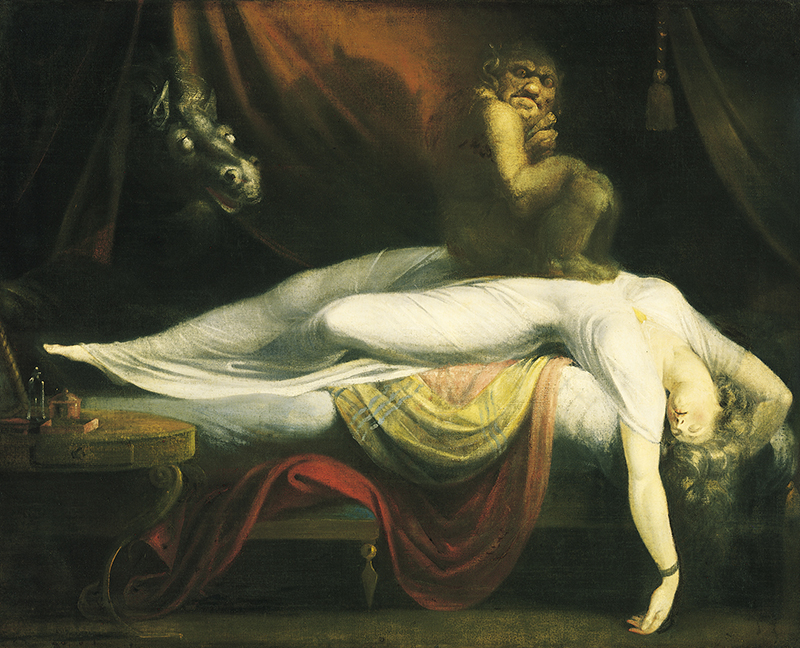Welcome to the first part in a series that will explore the design of Frankenstein; or, The Modern Prometheus. First up: costumes! Jocelyne Fowler takes on the challenge of creating a visual language for the clothes and flesh of Frankenstein.
Have you read Frankenstein?
Multiple times. I first read it in my early teens (I love(d) reading classic literature, so naturally this was a must read) and re-read it in an English class in high school and a European Literature Class in college.
What aspects of the story resonated the most with you?
How quickly Victor shuns his creation. Instead of taking on a fatherly role, Victor deserts his creation without any thought to the consequences. Another aspect about the novel that is remarkable to me is how a search for knowledge and trying to grasp at the unknown can ultimately lead to a downfall. Both Walton and Victor crave and yearn to discover things that perhaps they are not meant to ever know. And then Victor discovers this secret to human life he is no longer an innocent man who can enjoy life.
Frankenstein is set during the early 1800s? What is that period like in Europe, clothing-wise?
Mary Shelley wrote Frankenstein in the early 1800s (1816–1817) but it is set in the 18th Century (1700s), though she never specified an actual date. Because of this we decided to set the costumes in the late 1700s. I really liked the idea because during this time many other gothic novels came into popularity (such as Ann Radcliffe’s The Mysteries of Udolpho). During this period women would exaggerate their hips by wearing panniers (also known as hip baskets). An easy reference to this silhouette is Marie Antoinette. Men would wear breeches and tights with waistcoats (a fancy word for vests) that would fall down to their mid-thigh. Their coats are similar to a cutaway style with a narrow skirt and are not meant to close in the front. Men of this time were much more “dandy” and would wear lace and embroidery embellishments like women. For both men and women it is a very lovely and elaborate period.

Does your design stray at all from historical realism?
It is in the embellishments that my design will differ from historical realism. I plan on using the silhouette of the time but in a more minimalistic way. Items will not be over-trimmed—they will be much more clean and simple. I am also playing around with the idea of using vinyl and other plastic-like material in my embellishments to help bring the world of the costumes into the world of the set, lights, and sound design.
Is there an image that you keep coming back to as you work on your design?
Henry Fuseli’s “The Nightmare”. It was an image that David [Quicksall, the director] and I talked about early on in the process especially in regards to a certain character’s death. This image is also believed to have inspired Mary Shelley. It is an image of beauty as well as terror and can evoke many feelings and interpretations.

So. We all have a very specific concept of what Frankenstein’s creature looks like, but that image is not necessarily based on Shelley’s novel. How does Shelley describe the creature?
Shelley described Frankenstein’s monster as an 8-foot-tall, hideously ugly creation, with translucent yellowish skin pulled so taut over the body that it “barely disguised the workings of the arteries and muscles underneath,” watery, glowing eyes, flowing black hair, black lips, and prominent white teeth. It is through this description that David and I really wanted to play with the idea of skin being stretched and pulled over muscles. We then came up with the idea of the skin being corseted around the body. Through the use of a body suit that is a muscle print, I will then create corset-like pieces that wrap around the body suit and lace up around the actor. We will see the muscle print under and around this artificial “skin.”

Will audiences be surprised at your interpretation?
I think that any audience member who knows Mary Shelley’s idea of the creature will see that our interpretation is perhaps what she might have imagined. If the audience member only knows the Hollywood version of the creature, then they might be a little surprised.

Monster makeup. Fun or a headache?
Both. We are striving to make something as realistic as possible but this is extremely hard without a Hollywood budget—this means that we are very limited in the special effects that we can truly do. So in the next couple of weeks leading up to tech, our actor is going to begin playing around with make-up so we can hopefully work out a technique and design that does justice to Mary Shelley’s imagination as well as our production.
What has surprised you about this process so far?
What has surprised me the most about this process is the wonderful ideas that David has floating around in his mind as well as the beautiful imagery that I think he will create with the overall production.